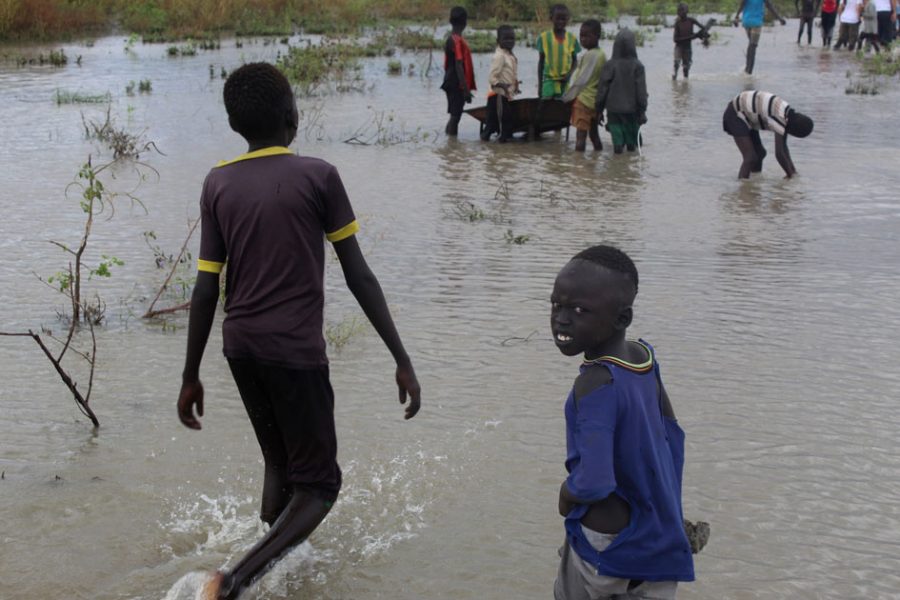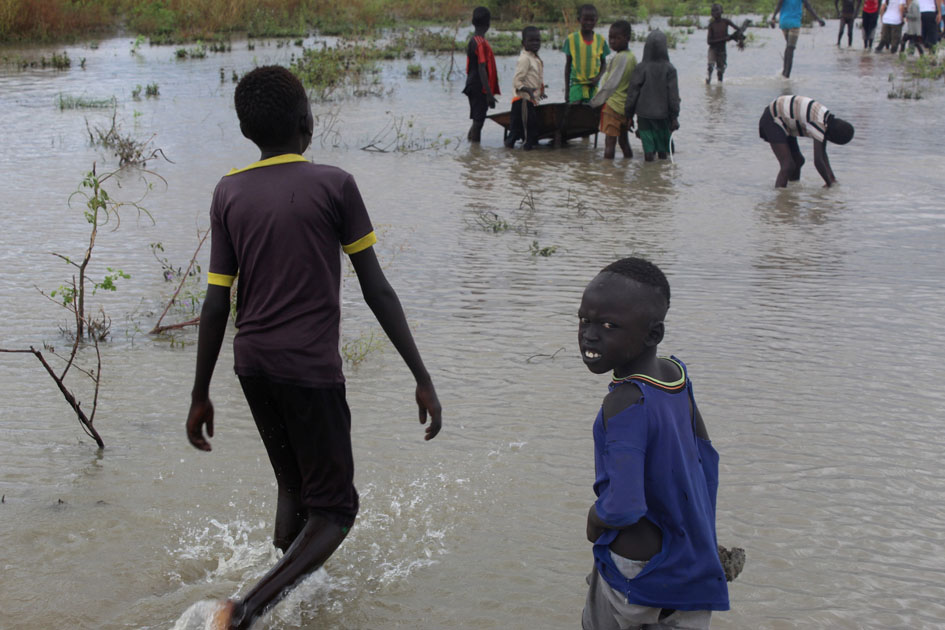
Heavy Rains and Floods Displace Hundreds of Thousands in East Africa
Heavy rains and floods have killed more than 50 people and forced hundreds of thousands of people from their homes across East Africa as researchers warn warming oceans are causing unpredictable weather patterns in the region. South Sudan declared a national emergency last week after 420,000 people fled from the floods, the United Nations said. […]

Heavy rains and floods have killed more than 50 people and forced hundreds of thousands of people from their homes across East Africa as researchers warn warming oceans are causing unpredictable weather patterns in the region.


South Sudan declared a national emergency last week after 420,000 people fled from the floods, the United Nations said.
Workers from charity Medicins Sans Frontieres are working to combat potential disease outbreaks in the town of Pibor, about 340 km east of the capital Juba near the Ethiopian border, after rising waters destroyed homes and livestock.
“We now live with dead animals, waste and garbage all submerged under these waters,” said resident Veronica Komor, aged 42.
Bolo Choa, a 36-year old mother, pleaded for help.
“This is so hard for a disabled person like me, everyone is trying to save themselves first. The water is getting deeper daily, I cannot crawl in it,” she said.

The natural disaster adds to an already desperate situation in South Sudan, which is reeling from a civil war that has killed about 400,000 people and forced nearly a third of the population to flee.
“What happened is a sudden flood which occurred here in Pibor and the water covered the whole town from market, to schools, houses and cattle camps all submerged,” said local health worker Regina Marco.
It was the worst flood ever to hit the area, she said.

“We are gathered here in this small dry land which is caving in as well. Even the airport. Up to now, there’s no relief… what we need from the government is to dig the river so that it can contain the water in one place,” Marco said.
In Somalia, overflowing rivers have flooded communities, displacing 370,000 and destroying farms. Floods have killed at least 17 people there, the United Nations said.
Neighboring Ethiopia has had more than 200,000 people displaced. In Kenya, at least 17,000 have been forced from their homes and 48 people killed.
WARMING OCEANS
Right now, the western Indian Ocean is warmer than usual. Researchers say increased ocean evaporation blows over the Horn of Africa and falls as rain.
The phenomenon, named the Indian Ocean Dipole, follows a cycle. When the Dipole is negative, drought ensues in the region. When it is positive, there is rain.
The Australian Bureau of Meteorology said the Indian Ocean Dipole index is strongly positive, with the latest weekly value at +2.06 °C.
Analysts say this is a regular weather cycle, but they warn warming oceans will bring more unpredictable weather.
“We are more likely to see events like this,” said Nathanial Matthews of the Stockholm-based Global Resilience Partnership. “The oceans are warming because of climate change.”
The average global sea surface temperature has been rising by approximately 0.13°C per decade over the past 100 years, the U.S. National Oceanic and Atmospheric Administration says.
The ocean has absorbed more than 93% of excess heat from greenhouse gas emissions since the 1970s, a 2013 report from the Intergovernmental Panel on Climate Change found.
Kenya is experiencing a higher than usual rainy season, Bernard Chanzu, deputy director of the Kenya Meteorological Department, told Reuters.
“The extremes are becoming more pronounced than before,” he said. “We can attribute this to the changing global atmosphere, like global warming.”
But Chris Shisanya, a professor of climatology at Nairobi-based Kenyatta University, said it was too early to say the heavy rains and floods were due to global warming.
(Reporting by Omar Mohammed in Nairobi and Stephen Tekajuok in Pibor; Editing by Katharine Houreld and Angus MacSwan)
